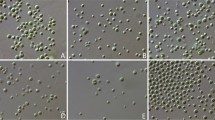Abstract
Soda lakes are highly alkaline extreme environments that form in closed drainage basins exposed to high evaporation rates. Because of the scarcity of Mg2+ and Ca2+ in the water chemistry, the lakes become enriched in CO3 2− and Cl−, with pHs in the range 8 to >12. Although there is a clear difference in prokaryotic communities between the hypersaline lakes where NaCl concentrations are >15% w/v and more dilute waters, i.e., NaCl concentrations about 5% w/v, photosynthetic primary production appears to be the basis of all nutrient recycling. In both the aerobic and anaerobic microbial communities the major trophic groups responsible for cycling of carbon and sulfur have in general been identified. Systematic studies have shown that the microbes are alkaliphilic and many represent separate lineages within accepted taxa, while others show no strong relationship to known prokaryotes. Although alkaliphiles are widespread it seems probable that these organisms, especially those unique to the hypersaline lakes, evolved separately within an alkaline environment. Although present-day soda lakes are geologically quite recent, they have probably existed since archaean times, permitting the evolution of independent communities of alkaliphiles since an early period in the Earth's history.
Similar content being viewed by others
Author information
Authors and Affiliations
Additional information
Received: January 22, 1998 / Accepted: February 16, 1998
Rights and permissions
About this article
Cite this article
Jones, B., Grant, W., Duckworth, A. et al. Microbial diversity of soda lakes. Extremophiles 2, 191–200 (1998). https://doi.org/10.1007/s007920050060
Issue Date:
DOI: https://doi.org/10.1007/s007920050060




